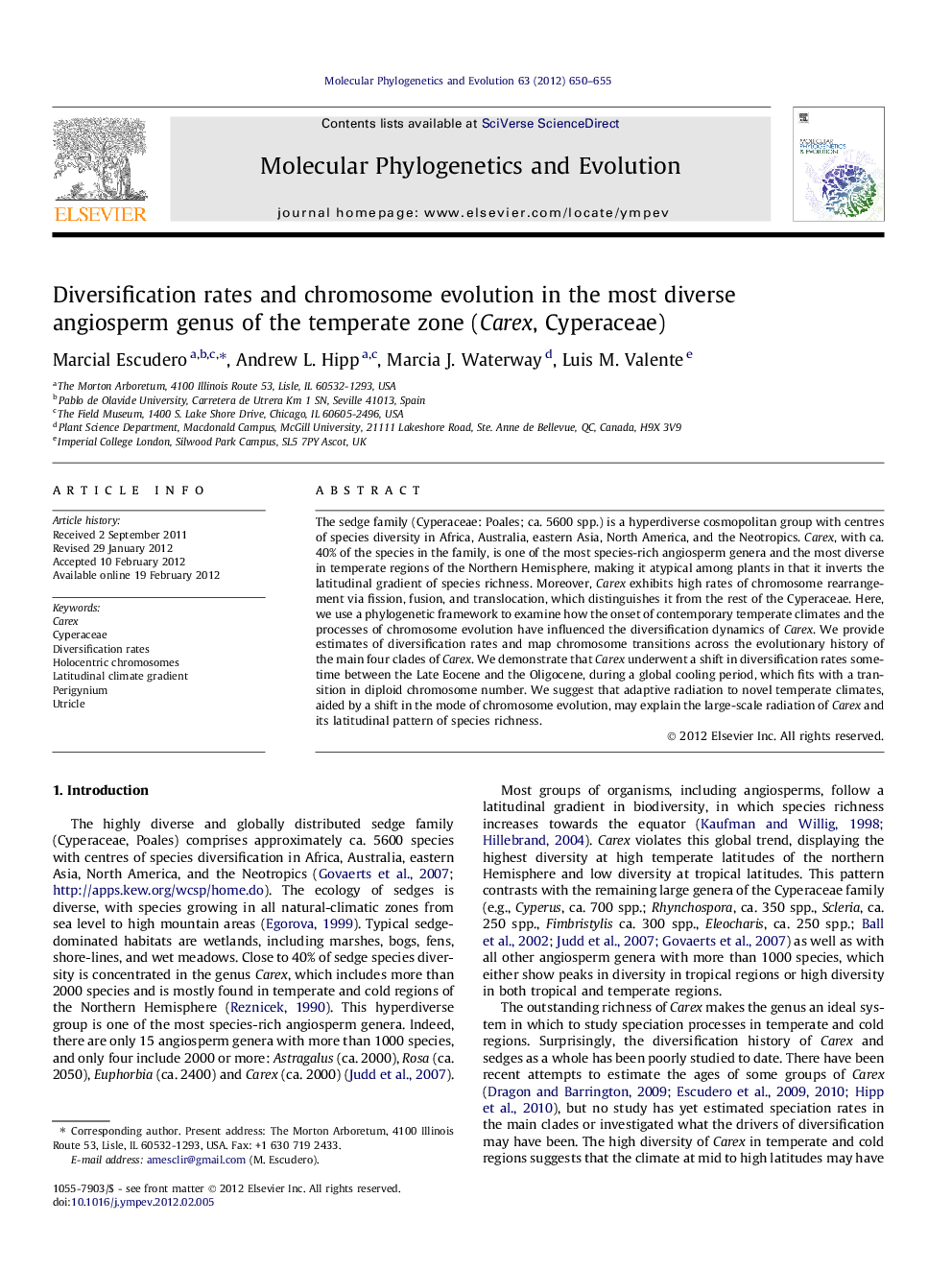| Article ID | Journal | Published Year | Pages | File Type |
|---|---|---|---|---|
| 2834130 | Molecular Phylogenetics and Evolution | 2012 | 6 Pages |
The sedge family (Cyperaceae: Poales; ca. 5600 spp.) is a hyperdiverse cosmopolitan group with centres of species diversity in Africa, Australia, eastern Asia, North America, and the Neotropics. Carex, with ca. 40% of the species in the family, is one of the most species-rich angiosperm genera and the most diverse in temperate regions of the Northern Hemisphere, making it atypical among plants in that it inverts the latitudinal gradient of species richness. Moreover, Carex exhibits high rates of chromosome rearrangement via fission, fusion, and translocation, which distinguishes it from the rest of the Cyperaceae. Here, we use a phylogenetic framework to examine how the onset of contemporary temperate climates and the processes of chromosome evolution have influenced the diversification dynamics of Carex. We provide estimates of diversification rates and map chromosome transitions across the evolutionary history of the main four clades of Carex. We demonstrate that Carex underwent a shift in diversification rates sometime between the Late Eocene and the Oligocene, during a global cooling period, which fits with a transition in diploid chromosome number. We suggest that adaptive radiation to novel temperate climates, aided by a shift in the mode of chromosome evolution, may explain the large-scale radiation of Carex and its latitudinal pattern of species richness.
Graphical abstractFigure optionsDownload full-size imageDownload as PowerPoint slideHighlights► Most species of Carex belong to non-Siderosicta Carex clade which crown node dates to the Late Eocene and Oligocene. ► Non-Siderosicta Carex clade underwent a shift in diversification rates, during a global cooling and drying period. ► This shift in diversification rates fits with a transition in diploid chromosome number. ► Climate change, the presence of perigynium and chromosome rearrangements may explain the hyper-diversity of Carex.
